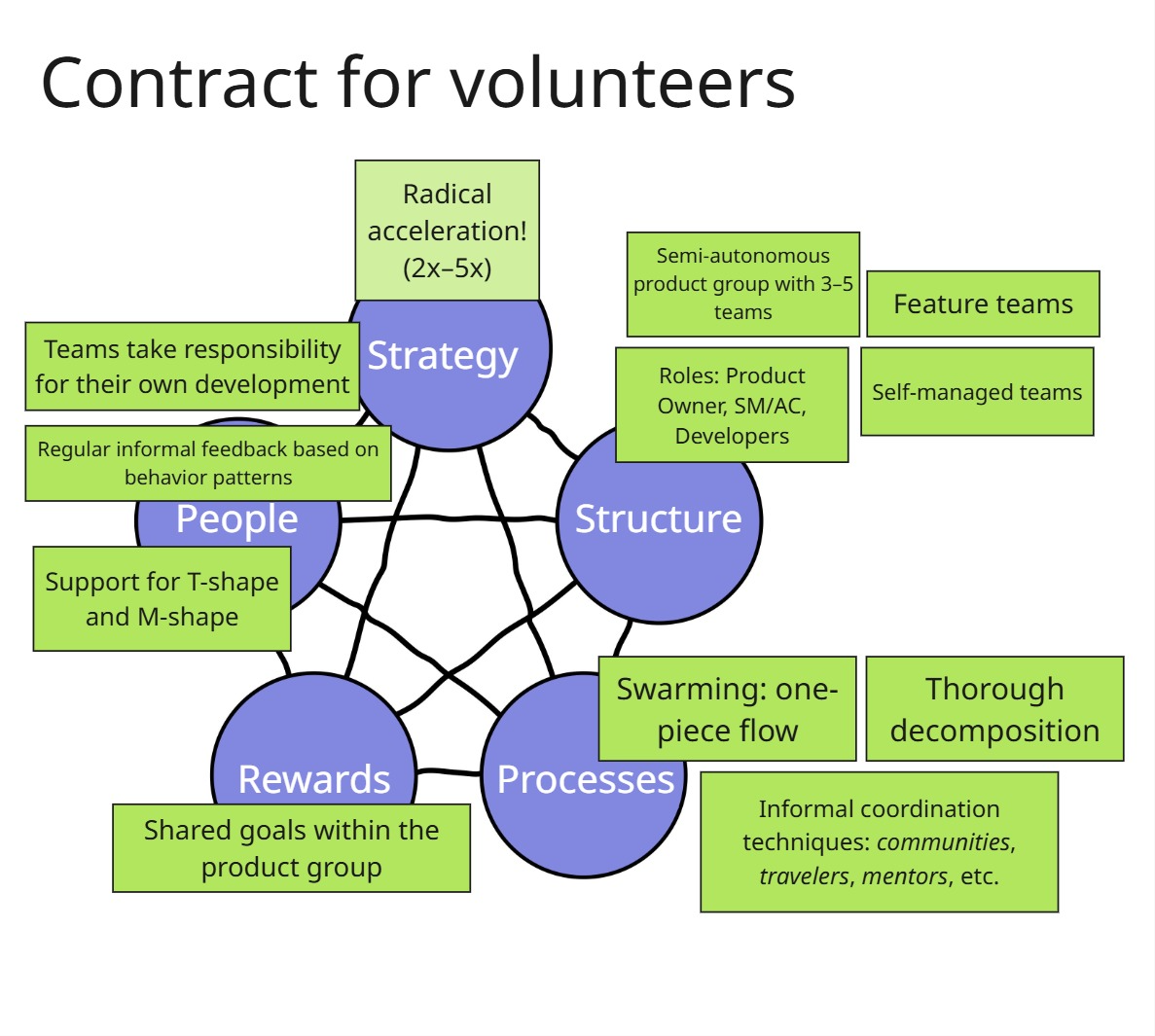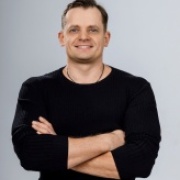In a typical Agile transformation, we encounter a lot of resistance — and that’s normal. Large organizations are social systems subject to the rule of homeostasis. Organizations strive for the status quo and resist change. This is exactly what Larman’s Laws are about:
- Organizations are implicitly optimized to preserve the status quo.
- People’s behavior is shaped by organizational sysytems.
- If you try to change culture directly, it will fail. Change the system, and culture will follow.
- If you change only superficially, the system will quickly revert to the old equilibrium.
As John Seddon aptly noted:
"Attempting to change an organization’s culture is a folly, it always fails. People’s behavior (the culture) is a product of the system; when you change the system peoples’ behavior changes."
When I engage in transformation, I do my best to follow three principles:
- Deep and narrow over broad and shallow
- Top-down and bottom-up
- Use volunteering
Deep and narrow over broad and shallow
Important principle, which directly follows from Larman’s Laws. Culture follows structure, which is why we aim to implement very deep changes in a limited part of the organization (30–70 people), transforming the entire organizational design: power structures, processes, rewards, and HR-policies.
This is actually the creation of a parallel organization with entirely different rules. We form a small product group that should demonstrate a dramatic leap in adaptability and speed — delivering results radically different from the rest of the company. That’s why the changes must be deep: it is naïve to expect a 2–6x improvement by relying only on superficial changes.
The second reason is risk management. By limiting the scope of changes, we enable learning within a smaller part of the organization and then, having gained valuable insights, scale the changes further. This approach does not endanger the entire company’s business.
Top-down and bottom-up
This principle naturally follows from the first. For real change — especially deep and narrow — you need support both from the top and the bottom.
From the top — senior managers, because only they can change structures, processes, rewards, and HR policies. They have the keys to change.
From the bottom — employees, because you cannot force adults to change. If transformation is pushed down without choice, resistance and low engagement are almost certain.
I have seen cases where teams were forced into Agile and Scrum. The result was a painful and exhausting process, with people burning out and leaving.
Use volunteering
The principle of volunteering helps secure support both from the top and the bottom.
I prefer to use it twice.
The first time — when choosing the product group for the pilot. Usually, senior managers already have ideas where to start (based on business and strategy). But I encourage them to look wider, at the whole organization. I ask Product Owners to “raise their hand” if they are ready for deep and narrow change. This is captured in the Volunteer Contract, which I will explain later.
The second time — inside the pilot group (30–70 people). Naturally, some employees support change, others don’t. So we apply for volunteering again: those who don’t want to join can move to other parts of the company, while those who are interested can step in and become part of the pilot.
Volunteer Contract
First of all, let me say that as an Agile coach, I am not interested in increasing speed by just 10–30%. These numbers are amusing and hardly ambitious. If a company correctly applies lean thinking principles, the improvement should be a multiple — 2 to 6 times. Otherwise, something is wrong.
That is why in pilots I always propose going for the maximum and setting ambitious goals. My volunteer contract is strict: I crank the “settings” of the organizational design up to the limit. At the core is Galbraith’s star model:

Star model with cranked “settings”
Structure.
A semi-autonomous product group composed of 3–5 interchangeable feature teams. The minimal set of roles includes: Product Owner, Scrum Master / Agile coach, and the teams. Any additional “badges” — architects, testers, business analysts, team leads, etc. — are removed. Why? Because additional roles take away responsibility from the teams and slow them down. The fewer roles, the faster self-management emerges.
Processes.
Feature teams are the foundation, but that is not enough. To achieve multiple accelerations, we must move to Swarming / One-Piece Flow mode: each team works on one feature at a time. Yes, someone may sit idle, and that’s okay. We optimize the flow, not the utilization of resources.
Coordination between teams is informal —through communities, component mentors, open space, scouts, communication in code, and other coordination mechanisms.
Metrics and rewards.
Multiple feature teams have a single shared Product Goal. Individual or team-level bonuses and KPIs are removed. If they cannot be eliminated completely, they are at least common at the product group level. This forces people to collaborate and shoot for a collective outcome.
HR policies.
When teams take end-to-end responsibility and work in One-Piece Flow, an imbalance inevitably arises: some people are overloaded, others are underutilized. To prevent this from becoming a problem, we design HR policies around T-shaped and M-shaped employee development. Skills-based payment, salary formulas, cross-training—tools may differ, the essence is the same: growth in adaptability and mutual support within teams. Responsibility for development is transferred to the teams themselves. Agile coaches / Scrum Masters assist teams with tools like “star maps,” which allow tracking adaptability and maturity progress.
Common goals and shared rewards require a vibrant peer-to-peer feedback mechanism. Therefore, the contract always includes a provision for regular informal peer feedback among teams: open discussions, reviews, joint retrospectives. This creates healthy tension and keeps everyone on their toes.
Key Takeaways
The world of large organizations is always the world of strong resistance to change— and that is normal. To increase the chances of a successful transformation, follow three principles:
- Deep and narrow — change the entire system, but only in a limited area.
- Top-down and bottom-up support — executives hold the keys to the system, people provide the energy for change.
- Volunteering — launch the transformation only with volunteers and reinforce it with a strict contract.
Apply the principle of volunteering at multiple levels, don’t be afraid of strict rules in the contract. This is the key to achieving radical increases in speed and adaptability.
